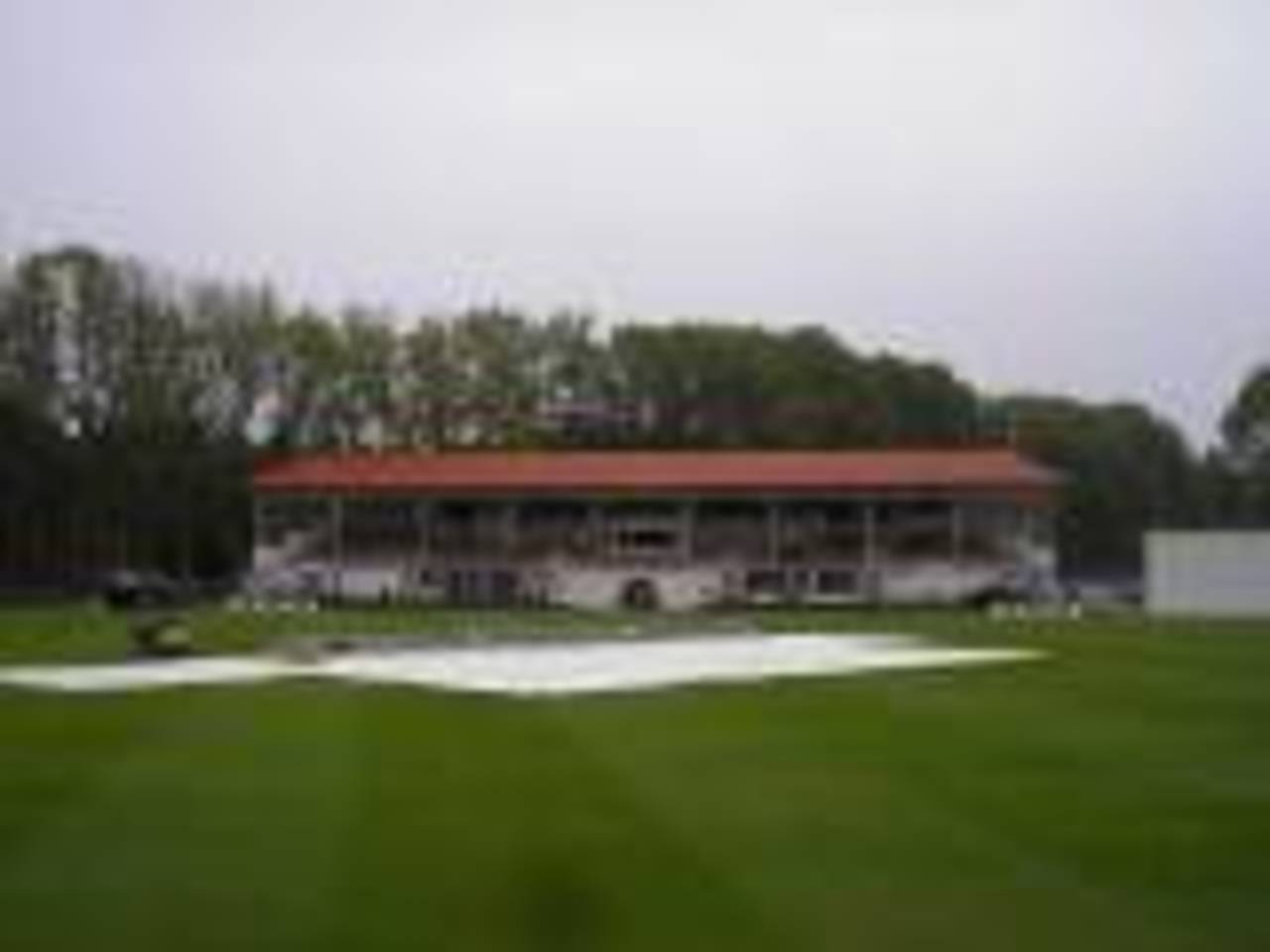The furthest extremity of cricket's universe
There is something quaint and wholesome about Dunedin's University Oval, with its solitary understated grandstand and appealing tree-lined vista
Andrew Miller
25-Feb-2013

ESPNcricinfo Ltd
There is a famous Billy Connolly sketch that might have been written with Dunedin in mind. During Britain's days of Empire, it was Connolly's fellow Scots who led the way in colonising the world, but in his opinion, they wouldn't have bothered to go further than the Mediterranean had they found somewhere cold enough and wet enough to remind them of home. "Further south!" was the cry every time they made landfall, but eventually, having rumbled through Africa, Asia and the Antipodes, they could go no further. And so they stopped.
And lo, they created Dunedin, the Scottish capital of the southern hemisphere. They couldn't have chosen a more appropriate resting place if they'd tried. When it's as cold and drizzly as it was for the final sessions of England's warm-up at the University Oval, Dunedin really does feel like the last place on earth. The closing overs were played out in front of a spartan crowd of thermal-hugging hardies, who wouldn't have looked out of place at The Grange in Edinburgh. It was nice weather for albatrosses, as they might say at the nearby Otago Peninsular.
The city is not without its attractions. There is the cultural centre of the Octagon with its statue of Robbie Burns in the middle, flanked by St Paul's Anglican cathedral and the baroque-interiored Regent Theatre. New Zealand's only castle lies just down the road, and the city even boasts the world's most southern motorway, the ten-kilometre stretch of State Highway One that heads out towards the airport, as well as the world's steepest street, Baldwin Street, which runs near vertically up the hills at the northern end of town.
There's only one culture that counts, however. And that's to be found down at Carisbrook, the self-styled House of Pain, which is home to the local rugby giants, the Otago Highlanders. The Scottish theme is ramped up to the max on match days, from the sponsored plastic broadswords with which the youth of the town chase each other around the concourse, to the team's mascot, a kilted hairy muscleman who looks as though he's leapt straight off the front of a pack of Scott's Porage Oats. The stadium is even situated on Murrayfield Street, which can hardly be a coincidence.
The New South Wales Waratahs were in town on Saturday night for the latest round of the Super 14, the Southern Hemisphere's premier club tournament, and they were treated to some of the filthiest weather their hosts could muster. It hardly dampened the spirits of the majority of the crowd, however. Some 3000 students on orientation week at Otago University were packed into the uncovered Eastern terrace, incongruously decked out in yellow-and-blue boiler suits and hard hats.
They were treated to a game of recklessly open rugby - the Super 14 frowns on such old-fashioned concepts as forward play, even when the weather is too wet to hold onto a pass. Possession was turned over with alarming frequency, but only 27 points were scored all told, as the Waratahs came from behind to win 15-12. As an exhibition, it was entertaining but strangely unnourishing - a warped hybrid of Rugby League's fast pace and Aussie Rules's reliance on kicking for position. On this flimsy evidence, it's easier to understand how both Australia and New Zealand came croppers so early in the World Cup.
The scars of that quarter-final defeat are still raw, incidentally. For all that the local sports shops still proclaim the All Blacks to be the "Champions of the World ®", navel-gazing is New Zealand's new national sport. On Saturday, Otago's Daily Times ran a full-page report into the state of the Highlanders finances. "If Otago rugby is a microcosm of New Zealand rugby," it declared, "then these are indeed trying times." The club is $6 million and rising in debt, and Carisbrook - Otago's home for 100 years - is under threat from the developers.
Which brings us back to the cricket. There is something quaint and wholesome about Dunedin's University Oval, with its solitary under-stated grandstand and appealing tree-lined vista. But it's impossible to escape the feeling that England and its entourage have stepped into another dimension on this trip. If rugby, the bedrock of New Zealand society, is feeling the pinch of financial reality, then God help the cricketers, most of whom barely raise an eyebrow among the general public. The distant din of the IPL, and all the money associated with it, is sure to be heard more loudly as this series wears on. Even in the furthest extremities of cricket's universe.
Andrew Miller is the former UK editor of ESPNcricinfo and now editor of The Cricketer magazine